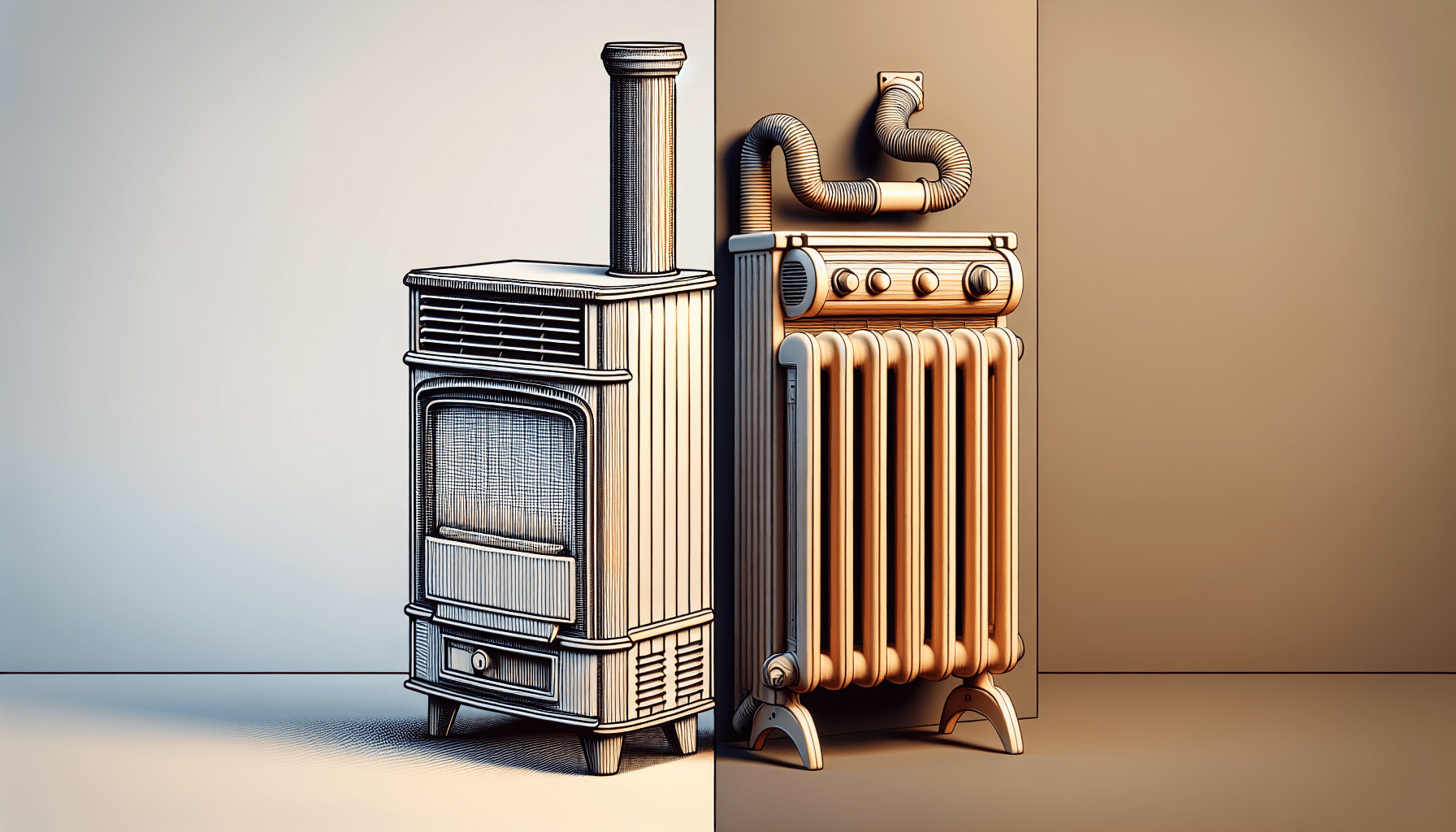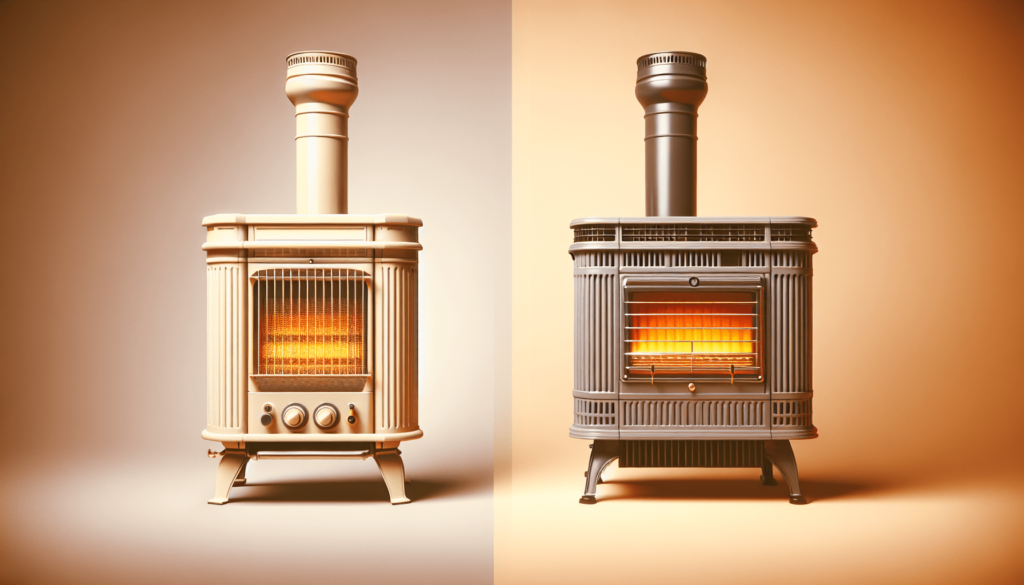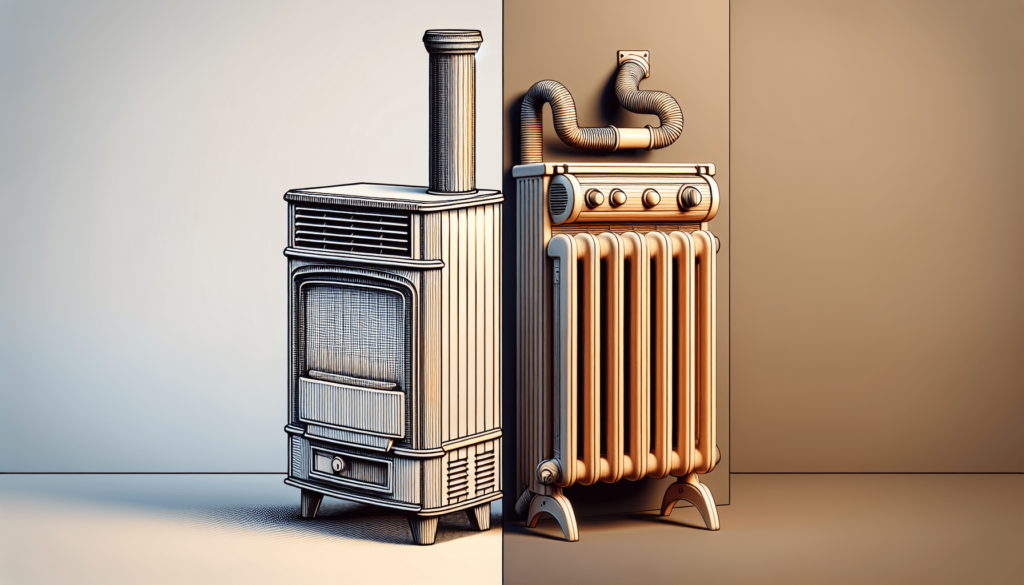
Have you ever found yourself wondering whether you should go for a chimney-vented heater or opt for a non-vented one? Both have their perks and pitfalls, and making the right choice can greatly affect your home’s comfort, safety, and heating efficiency. Let’s dive deep into the pros, cons, and intricate details of both chimney-vented and non-vented heaters to help you make an informed decision.

Understanding the Basics
Before we get into the nitty-gritty comparisons, it’s crucial to understand what chimney-vented and non-vented heaters are, how they operate, and their primary functions.
What is a Chimney Vented Heater?
A chimney-vented heater, also known as a vented heater, connects to a chimney or flue vent that directs combustion gases outside your home. These heaters are often used in traditional setups where an existing chimney or venting system can be utilized. Think of older homes with brick chimneys; those are often equipped with such heaters.
What is a Non-Vented Heater?
Non-vented heaters, also known as ventless or unvented heaters, don’t require a chimney or external venting. Instead, they release combustion gases directly into the room where they’re installed. These heaters are more modern and can be installed in places where a chimney might not be feasible or desired.
Analyzing the Differences
Now that we’ve got a basic grasp of what these heaters are, let’s break down the major differences between the two types. We’ll look at aspects such as installation, efficiency, safety, and overall user experience.
Installation Process
Chimney Vented Heater
Installing a chimney-vented heater requires a connection to an existing chimney or the installation of a new venting system. This can be labor-intensive and expensive, especially if modifications to your home structure are needed.
Non-Vented Heater
Non-vented heaters, on the other hand, have significantly simpler installation requirements. Since there’s no need for external venting, they can be set up almost anywhere, making them a more versatile option for modern homes or small spaces.
Efficiency
Chimney Vented Heater
The chimney-vented heaters tend to be less efficient because a portion of the heat they produce escapes through the chimney along with the combustion gases. This heat loss can make them less energy-efficient, resulting in higher utility bills.
Non-Vented Heater
Non-vented heaters are generally more efficient as no heat is lost through a chimney. All the heat generated stays within the room, making these heaters more cost-effective in the long run.
Safety Aspects
Chimney Vented Heater
Since the combustion gases are expelled outside, chimney-vented heaters are considered safer in terms of indoor air quality. However, there can be concerns about chimney blockages or leaks, which can pose risks.
Non-Vented Heater
One of the main concerns with non-vented heaters is indoor air quality. Since the combustion gases are released indoors, proper ventilation and oxygen levels need to be maintained. Always opt for models with built-in safety features like oxygen depletion sensors.
Maintenance Needs
Chimney Vented Heater
Maintaining a chimney-vented heater involves regular inspections and cleanings of the chimney or flue to prevent blockages and ensure safe operation. This can add to the overall cost and effort required to keep the heater running optimally.
Non-Vented Heater
Non-vented heaters require less maintenance as there’s no chimney to clean. However, it’s crucial to regularly check and maintain the heater to ensure its safety features are functioning correctly.

Comparing Costs
The cost of purchasing, installing, and maintaining these heaters can vary greatly. Here, we’ll break down each aspect to give you a clearer financial picture.
Initial Purchase Cost
| Type of Heater | Average Initial Cost |
|---|---|
| Chimney Vented | $300 – $2,000 |
| Non-Vented | $150 – $1,200 |
Chimney Vented Heater
The price range for chimney-vented heaters can be quite broad. More advanced units can be significantly more expensive, especially if specialized venting is required.
Non-Vented Heater
Non-vented heaters generally have a lower initial cost. The lack of necessity for additional venting hardware makes them more affordable upfront.
Installation Cost
| Type of Heater | Average Installation Cost |
|---|---|
| Chimney Vented | $500 – $3,000 |
| Non-Vented | $100 – $500 |
Chimney Vented Heater
Due to the complexity and labor involved, installing a chimney-vented heater can run up quite an expense. Hiring professionals is usually a must for this kind of installation.
Non-Vented Heater
Non-vented heaters are easier and cheaper to install, often requiring just a simple mounting and a gas line connection.
Operating Costs
When it comes to operating costs, factors like fuel type, efficiency, and usage habits come into play. Generally, non-vented heaters tend to be more cost-effective as they don’t lose heat through venting.
Maintenance Costs
| Type of Heater | Average Annual Maintenance Cost |
|---|---|
| Chimney Vented | $100 – $500 |
| Non-Vented | $50 – $200 |
Non-vented heaters usually have lower ongoing maintenance costs. However, any savings should be weighed against the potential need for ensuring proper indoor air quality.
Which One is Right for You?
Choosing between a chimney-vented and a non-vented heater largely depends on your particular needs, living situation, and personal preferences.
Space Considerations
Chimney Vented Heater
If you live in a home with a pre-existing chimney or plenty of space for venting installation, a chimney-vented heater can be an excellent choice. They’re often preferred for larger homes where proper ventilation can be easily managed.
Non-Vented Heater
For smaller homes or apartments, non-vented heaters can be a more convenient option. Their flexible installation options make them ideal for places where space is at a premium.
Environmental Impact
Chimney Vented Heater
Vented heaters are often considered better for the environment since the combustion gases are released outside, reducing indoor air pollution.
Non-Vented Heater
The environmental impact of non-vented heaters can be higher due to the potential for increased indoor air pollutants. However, advancements in technology are making these heaters safer and more eco-friendly.
Energy Source
The type of energy source available to you can also influence your decision:
| Type of Heater | Common Energy Sources |
|---|---|
| Chimney Vented | Gas, Coal, Wood |
| Non-Vented | Gas, Electric |
Make sure you’re choosing a heater that is compatible with your preferred or readily available energy source.
Safety and Regulations
It’s crucial to check local building codes and safety regulations before making a decision. Some areas have strict guidelines for non-vented heaters due to their impact on indoor air quality.
Pros and Cons
Understanding the advantages and disadvantages of each type can help bring clarity to your decision. Here’s a summary to guide you.
Pros and Cons of Chimney Vented Heaters
| Pros | Cons |
|---|---|
| Better indoor air quality | Higher installation cost |
| Suitable for larger homes | Requires regular maintenance |
| Uses multiple types of fuel | Lower energy efficiency |
Pros and Cons of Non-Vented Heaters
| Pros | Cons |
|---|---|
| Easier and cheaper to install | Potential indoor air quality issues |
| More energy-efficient | Limited by strict regulations |
| Flexibility in placement | Requires good ventilation |
Real-Life Scenarios
Scenario 1: A Large, Brick Home with an Existing Chimney
For someone living in a large, older home with a brick chimney, a chimney-vented heater might be more suitable. You’re leveraging an existing structure, and the larger space can handle the ventilation needs more effectively.
Scenario 2: A Modern Apartment
In modern apartments, where space is limited and venting options are restricted, a non-vented heater could be the way to go. Their ease of installation and efficient heating can provide the comfort needed without compromising too much on space and budget.
Scenario 3: Environmentally Conscious Individual
If you’re particularly concerned about environmental impact, a chimney-vented heater might be more appealing due to its ability to expel combustion gases outdoors. However, it’s essential to ensure the chimney is well maintained to prevent any inefficiencies.
Conclusion
Choosing between a chimney-vented and non-vented heater involves weighing various factors such as installation needs, efficiency, safety, and costs. Understanding the intricacies of each type can help you make a decision that aligns with your specific circumstances and preferences. Whether you’re looking for a cost-effective, easy-to-install option or a more robust system utilizing an existing chimney, both types have much to offer. With this guide, you’re well-equipped to make an informed choice and keep your home warm and cozy all winter long.
